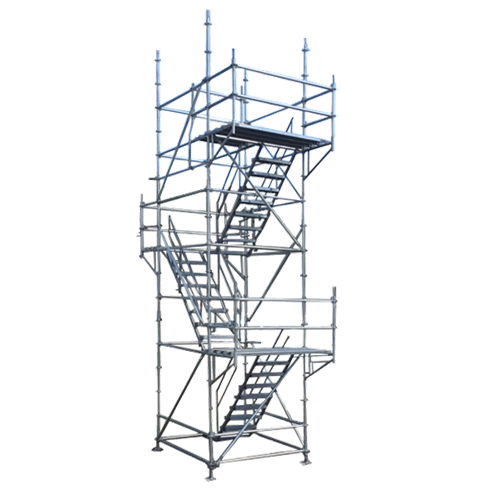Checking Out the Various Types of Scaffolding Used in Building Projects
The construction industry relies heavily on different types of scaffolding to meet particular job needs, each offering distinctive benefits and applications. Traditional frame scaffolding supplies a tough foundation for general jobs, while put on hold scaffolding is necessary for job on skyscraper structures.

Conventional Structure Scaffolding
Conventional structure scaffolding is one of one of the most extensively made use of techniques in the construction market due to its robustness and convenience. This system is composed of horizontal and upright frameworks that are constructed to develop a steady platform for employees and products. The primary components consist of upright messages, straight ledgers, and angled braces, which with each other supply a strong structure that can support considerable lots.
One of the crucial benefits of typical frame scaffolding is its flexibility to various building and construction projects, ranging from property structures to huge industrial frameworks. The modular design enables for simple setting up and disassembly, making it efficient for both long-lasting and short-term jobs. In addition, the system can be customized in height and size, accommodating different building styles and site conditions.
Security is extremely important in scaffolding applications, and traditional frame systems are furnished with guardrails and toe boards to avoid falls and ensure worker protection. Additionally, regular examinations and adherence to safety and security laws are crucial in preserving the integrity of the scaffold. In general, typical structure scaffolding continues to be a basic option in the building and construction sector, supplying a trusted system for labor and boosting total job effectiveness

Suspended Scaffolding
Suspended scaffolding offers an one-of-a-kind option for construction jobs that need accessibility to elevated surface areas, specifically in circumstances where typical framework scaffolding might be unwise. This type of scaffolding is typically put on hold from the roof covering or top levels of a framework, using a system of ropes, platforms, and pulley-blocks to develop a functioning area that can be gotten used to numerous elevations.
Among the primary benefits of put on hold scaffolding is its flexibility. It can be easily repositioned or decreased to fit adjustments in building requirements, making it optimal for jobs such as window installation, façade work, and maintenance on high-rise buildings. Furthermore, the marginal footprint of suspended scaffolding enables far better use ground room in city environments, where space is usually limited.
Safety is a vital factor to consider in using put on hold scaffolding. Correct rigging and securing systems need to be employed to guarantee stability and avoid accidents. Operators should likewise be learnt the risk-free use of this equipment. Generally, suspended scaffolding offers a effective and effective service for accessing hard-to-reach areas in numerous construction circumstances, boosting both efficiency and safety and security on website.
System Scaffolding
System scaffolding, commonly related to as a modern remedy in the scaffolding industry, includes pre-engineered elements that can be quickly constructed and adjusted for different construction tasks. Scaffolding. This sort of scaffolding is characterized by its modular design, which allows for convenience and effectiveness on job sites, fitting architectural requirements and various elevations
Commonly made from high-strength steel or aluminum, system scaffolding uses scaffolder cv word enhanced toughness and redirected here stability. The parts include vertical posts, straight ledgers, and angled dental braces, which interconnect firmly, guaranteeing a durable structure. The design often integrates standard installations, simplifying assembly and disassembly procedures, therefore reducing labor time and expenses.

Rolling Scaffolding
Rolling scaffolding is a functional option to conventional set scaffolding, designed for flexibility and simplicity of use on building sites. This kind of scaffolding contains a platform sustained by structures with wheels, permitting workers to conveniently move it as needed. The flexibility function substantially enhances productivity, as it scaffold express reduces downtime related to setting up and disassembling fixed scaffolding.
Generally created from lightweight materials such as light weight aluminum or steel, rolling scaffolding provides a tough yet portable solution for tasks requiring regular repositioning - Scaffolding. It is specifically beneficial in jobs such as painting, drywall installment, and electric work, where accessibility to various heights and areas is required
Safety is vital in rolling scaffolding layout, with features such as locking wheels to avoid unintended movement when in use, and guardrails to shield workers from drops. In addition, numerous designs are flexible in elevation, accommodating different task demands.
Cantilever Scaffolding

The layout of cantilever scaffolding generally entails utilizing brackets or arms anchored to a structure or structure, enabling the system to prolong exterior safely. Safety is critical; thus, these scaffolds need to be engineered to withstand numerous loads and ecological problems. Regular assessment and maintenance are necessary to guarantee structural honesty and worker security.
Cantilever scaffolding is favored for its flexibility and efficient use of room, making it a popular selection in city environments where area restraints are typical. Furthermore, it assists in simpler accessibility to high elevations, eventually contributing to the overall effectiveness of building and construction tasks. Just like all scaffolding kinds, correct training and adherence to security requirements are essential for workers using cantilever scaffolding.
Verdict
Traditional structure scaffolding supplies stability, while suspended scaffolding provides flexibility for elevated jobs. System scaffolding promotes quick assembly, and rolling scaffolding enhances flexibility for differing work environments.
Conventional frame scaffolding gives a strong foundation for basic jobs, while suspended scaffolding is essential for job on high-rise frameworks.Rolling scaffolding is a functional option to traditional fixed scaffolding, developed for mobility and convenience of use on building and construction websites. As with all scaffolding types, correct training and adherence to security standards are essential for employees making use of cantilever scaffolding.
Standard structure scaffolding offers stability, while suspended scaffolding offers versatility for raised jobs. System scaffolding assists in fast assembly, and rolling scaffolding boosts movement for differing work settings.